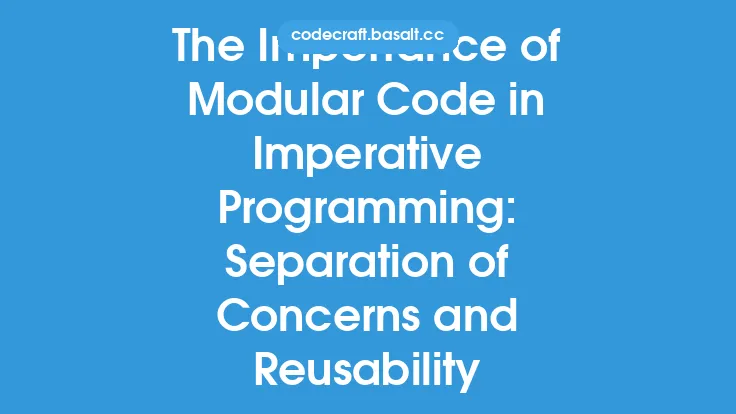When designing object-oriented systems, developers often face a crucial decision: whether to use composition or inheritance to create complex objects from simpler ones. While inheritance is a fundamental concept in object-oriented programming (OOP), it can lead to rigid and fragile designs. In contrast, composition offers a more flexible and maintainable approach to building complex objects. In this article, we will explore the importance of composition over inheritance in OOP and discuss the benefits of using composition in software design.
Introduction to Composition and Inheritance
Composition and inheritance are two fundamental concepts in OOP that enable developers to create complex objects from simpler ones. Inheritance allows a subclass to inherit the properties and behavior of a parent class, creating a hierarchical relationship between classes. Composition, on the other hand, involves creating objects from other objects, where an object contains or manages a collection of other objects. While both approaches can be used to create complex objects, they have different implications for software design and maintainability.
Problems with Inheritance
Inheritance can lead to several problems in software design, including tight coupling, fragility, and rigidity. Tight coupling occurs when a subclass is heavily dependent on its parent class, making it difficult to modify the parent class without affecting the subclass. Fragility refers to the tendency of a subclass to break when the parent class is modified, even if the modification is minor. Rigidity occurs when a subclass is unable to adapt to changing requirements or new functionality, making it difficult to extend or modify the class. These problems can lead to a rigid and fragile design, making it challenging to maintain and evolve the software over time.
Benefits of Composition
Composition, on the other hand, offers several benefits over inheritance, including loose coupling, flexibility, and testability. Loose coupling occurs when objects are designed to interact with each other through well-defined interfaces, making it easier to modify or replace one object without affecting others. Flexibility refers to the ability of objects to adapt to changing requirements or new functionality, making it easier to extend or modify the software. Testability refers to the ability of objects to be tested independently, making it easier to ensure that the software is correct and reliable. By using composition, developers can create software that is more modular, flexible, and maintainable.
Implementing Composition
Implementing composition in software design involves several key principles, including the use of interfaces, encapsulation, and delegation. Interfaces define the contract or behavior that an object must implement, making it easier to swap out different implementations without affecting the rest of the software. Encapsulation involves hiding the internal implementation details of an object, making it easier to modify or replace the object without affecting other parts of the software. Delegation involves assigning responsibilities to other objects, making it easier to distribute functionality and create a more modular design. By using these principles, developers can create software that is more modular, flexible, and maintainable.
Real-World Examples of Composition
Composition is used in many real-world software systems, including graphical user interfaces, database systems, and web applications. For example, a graphical user interface might be composed of multiple widgets, each with its own behavior and properties. A database system might be composed of multiple tables, each with its own schema and data. A web application might be composed of multiple components, each with its own functionality and user interface. In each of these examples, composition is used to create a complex system from simpler components, making it easier to maintain and evolve the software over time.
Best Practices for Using Composition
To get the most out of composition, developers should follow several best practices, including favoring composition over inheritance, using interfaces to define behavior, and encapsulating internal implementation details. Favoring composition over inheritance involves using composition to create complex objects from simpler ones, rather than relying on inheritance to create a hierarchical relationship between classes. Using interfaces to define behavior involves defining the contract or behavior that an object must implement, making it easier to swap out different implementations without affecting the rest of the software. Encapsulating internal implementation details involves hiding the internal implementation details of an object, making it easier to modify or replace the object without affecting other parts of the software. By following these best practices, developers can create software that is more modular, flexible, and maintainable.
Conclusion
In conclusion, composition is a more flexible and maintainable approach to building complex objects than inheritance. By using composition, developers can create software that is more modular, flexible, and testable, making it easier to maintain and evolve the software over time. While inheritance can lead to rigid and fragile designs, composition offers a more flexible and adaptable approach to software design. By following best practices and using composition to create complex objects, developers can create software that is more reliable, efficient, and effective. As software systems continue to grow and evolve, the importance of composition over inheritance will only continue to increase, making it a crucial concept for developers to understand and master.





